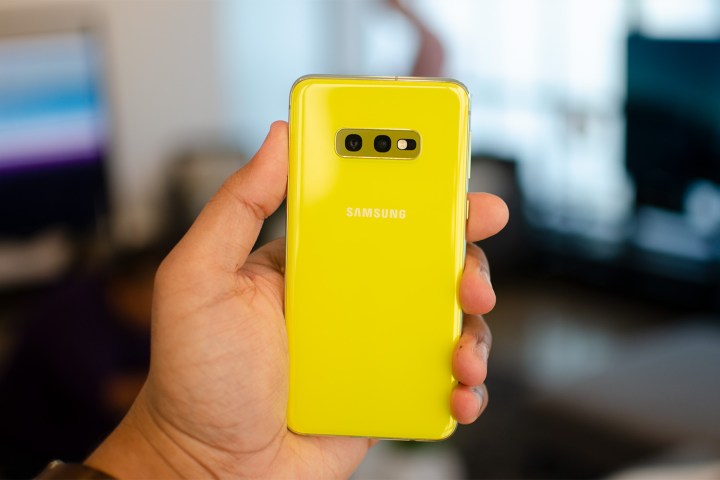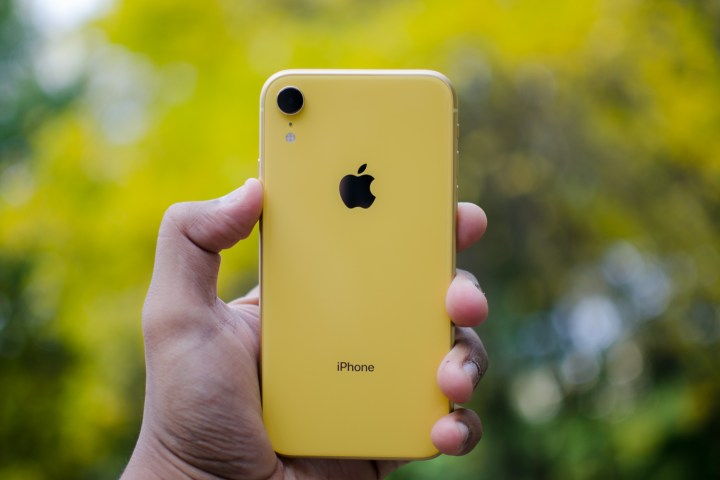
Samsung needed to shake things up for its smartphone business this year — not just because it’s the 10th anniversary of its Galaxy smartphones, but also because sales have been disappointing in 2018. The strategy? Bring the features of the Galaxy S10 and S10 Plus close to par, jack up the price, and then introduce a new phone with fewer bells and whistles at what was once around the standard price of a flagship smartphone.
Sound familiar? It’s almost exactly the same approach Apple took with the iPhone XS, XS Max, and the lower-cost iPhone XR last year. The big difference is screen size — Apple made the iPhone XR sit in between the XS and XS Max, offering bigger screen than the XS despite the lower price. Samsung’s new Galaxy S10e, however, is the smallest phone of the new S10 range.
Although Samsung doesn’t completely knock off Apple, there are five ways the Galaxy S10e is similar to the iPhone XR — follow along as we break them down.
Display
- 1. Samsung Galaxy S10e
The Samsung Galaxy S10e has an Infinity-O display, meaning the selfie camera floats on the screen like a hole-punch on a piece of paper (hence the term, hole-punch camera). It’s distinctly different to the iPhone XR’s screen, which has a notch. However, the S10e is one of the first Samsung flagship smartphones since 2016 to have a non-Edge display — meaning the sides of the screen don’t curve into the edges. It’s a flat, traditional screen instead. As such, Samsung has added a thicker than usual, uniform bezel around the screen of the phone. (The S10 and S10 Plus retain the Edge display.)
The iPhone XR is easily distinguishable from the XS and XS Max because it, too, has a thicker than usual, uniform bezel surrounding the screen. It’s distinct, and it’s easy to draw parallels when the iPhone XR and Galaxy S10e are placed side to side. Both phones also have lower screen resolutions compared to their more expensive siblings, though the Galaxy S10e trumps the iPhone XR with higher-resolution Full HD+ screen. The Galaxy S10e display is also HDR10+-certified, making it the better screen overall (on paper, at least).
Colors
- 1. Samsung Galaxy S10e
In the history of phones, the list of yellow-colored ones isn’t long. In recent memory — short of the Nokia 8810 4G feature phone and the Lumia 1020 — the iPhone XR comes to mind. Well, you can add the Galaxy S10e to the list because it comes in a bright Canary Yellow color option. The S10e has a few more color options than the S10 and S10 Plus, which is similar to Apple’s approach with the iPhone XR, as it introduced a range of new colors exclusively for the phone.
Sadly, Samsung’s not bringing the Canary Yellow Galaxy S10e to the U.S. — instead, you’ll have to make do with white, black, blue, or flamingo pink (the same options for the S10 and S10 Plus).
Camera

In recent years, Samsung’s Galaxy Plus phones have had two cameras on the back, while the smaller Galaxy phone just had one. This is a similar story with Apple’s older iPhones, as the standard iPhone like the iPhone 8 had a single lens, whereas the iPhone 8 Plus had a dual-camera system. Well, now that the iPhone XS and XS Max have the same features and cameras across the board, Samsung has decided to do the same (almost) between the S10 and S10 Plus — both have triple-camera setups.
The iPhone XR lacks the second camera found on the XS and XS Max, and similarly, the Galaxy S10e lacks the third camera that’s present on the rest of the S10 range. While the two phones lack the full camera versatility of the more expensive devices, the S10e does pull ahead for offering a dual-camera system, which specifically adds an ultra-wide-angle lens alongside the main 12-megapixel camera.
Processor

Despite the varying price tags, the entire Galaxy S10 range is powered by Qualcomm’s Snapdragon 855 processor, the latest chipset that will power most Android flagship phones in 2019. That means you should get similar performance across the board, no matter which phone you pick.
Apple did this first with its most recent iPhone range — all three are powered by the A12 Bionic processor, which means there are no compromises in performance whatsoever.
Price
Samsung’s latest Galaxy S10 range offers slightly better value when directly compared to the latest iPhones. The Galaxy S10 can be had for $900, and it comes with 128GB of internal storage, whereas the S10 Plus costs $1,000 for the same amount of space. Meanwhile, the iPhone XS starts at $1,000 for only 64GB of storage, and the XS Max jumps up to $1,100 for the same, smaller storage.
Those devices are all still very expensive, and that’s meant to be the allure of the iPhone XR and the Galaxy S10e. Both cost $750, which is still pricey, but it’s easier to stomach spending that much. The S10e does have 128GB of storage as well, whereas the XR starts with 64GB.
Conclusion
Phones are undoubtedly getting expensive, but there’s somewhat of an effort to offer lower-cost premium devices with similar modern designs, but fewer features. Samsung’s new Galaxy 10e still costs more than last year’s Galaxy S9, and the iPhone XR’s launch price was more than the standard iPhone 8 the year prior, but both cost significantly less than their higher-priced siblings. Samsung is taking a page out of Apple’s strategy book here with the Galaxy S10e, but we’ll have to just wait to see if it will garner much attention next to the spectacular S10 and S10 Plus.






